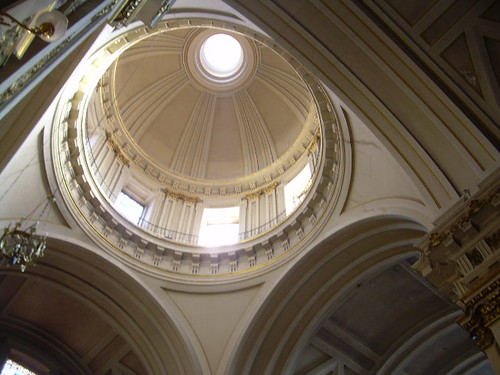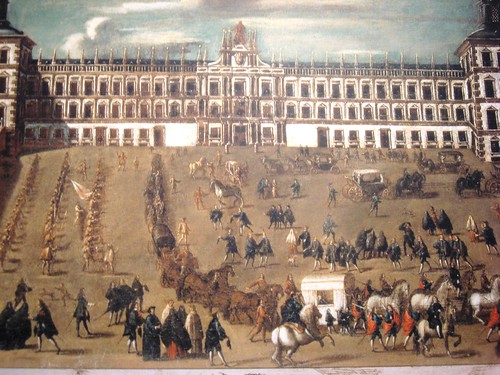Pablo Gil-Cornaro Commenting Architecture
domingo, 20 de mayo de 2012
sábado, 19 de mayo de 2012
martes, 15 de mayo de 2012
lunes, 18 de octubre de 2010
escenografia barroca
En este juego de apariencias jugó un papel muy importante la pintura al fresco, que consiguió eliminar las paredes y techos, reconvirtiéndolos en arquitecturas increíbles que crean espacios infinitos poblados de ángeles, santos o la propia divinidad.
Pozzo. Decoración (ilusionista) de los techos de la iglesia jesuita en Viena
En el caso de España fue especialmente importante esta decoración fingida, pues la crisis que sufría el imperio durante el siglo XVII impedía utilizar materiales costosos. No es extraño que en vez de mármoles o bronces se utilizaran pan de oro (finísimas láminas de oro sobre la madera) para los retablos o inclusocúpulas falsas (llamadas encamonadas) que en vez de la cara piedra utilizaban yeso y maderas.
Aunque parezca mentira toda la cúpula está realizada con yeso y maderas ligeras. Iglesia de San Isidro, Madrid, realizada por el padre Bautista
Otro importante lugar de teatralidad será la arquitectura efímera(hecha con madera o cartón piedra) para las entradas, bautizos, bodas o funerales de los reyes.
Salida de los reyes del Palacio Real de Madrid (Siglo XVII)
lunes, 27 de septiembre de 2010
http://www.thepaintingfool.com/
http://www.thepaintingfool.com/
lunes, 20 de septiembre de 2010
Coloquio con Gustavo Bueno Futbol y Filosofia
http://www.cihefe.es/cuadernosdefutbol/2010/09/i-foro-felix-martialay/
jueves, 16 de septiembre de 2010
On "Good enough" attitude and technology
My comment would be that this lecture by Tom Wiscombe is unmissable and an anxiety relief valve for those seeking to be innovative. Please please comment on it I would like to comment on your comments.
http://www.aaschool.ac.uk//VIDEO/lecture.php?ID=1172
Thanks AA for this video.
http://www.aaschool.ac.uk//VIDEO/lecture.php?ID=1172
Thanks AA for this video.
Suscribirse a:
Entradas (Atom)












